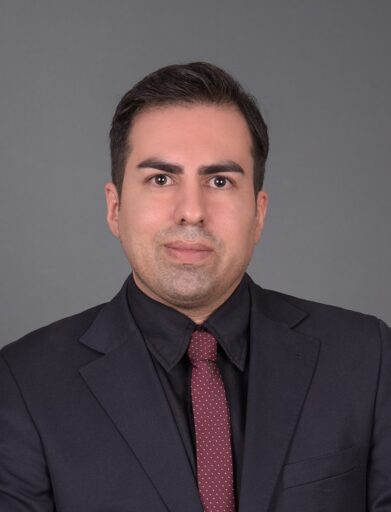PhD Student in Civil Engineering

Kazem Javan is a PhD candidate at Western Sydney University and a civil engineer with a strong background in water and environmental engineering. He has experience working in both construction and research, with a current focus on developing coatings for sewage infrastructure protection. His academic journey includes a Master’s degree in civil engineering and active participation in CRC projects. Kazem combines practical engineering skills with a passion for sustainable solutions in wastewater treatment and infrastructure durability.
Zeolite Australia Pty Limited
Western Sydney University
Dr Mariam Darestani
Kazem Javan is currently involved in a PhD research project titled Design of Coating for Sewer Pipes at Western Sydney University. The project aims to develop a durable, acid-resistant, and environmentally friendly coating material for the rehabilitation of aging sewer infrastructure. Traditional concrete pipelines are highly susceptible to microbial-induced concrete corrosion (MICC) caused by acidic by-products of bacteria in sewage environments. This project addresses this challenge by formulating a sustainable alternative to Ordinary Portland Cement (OPC) using Australian-sourced recycled materials such as waste glass.
Kazem’s work focuses on optimising the formulation to enhance mechanical strength, adhesion to concrete surfaces, and long-term resistance to chemical and biological degradation. The research includes experimental testing under varied temperature and pH conditions, aligned with ASTM standards, and aims to create a sprayable mortar suitable for real-world application. The outcomes will contribute to extending the lifespan of sewer systems while promoting circular economy principles and reducing CO2 emissions associated with traditional construction materials.
My decision to undertake an industry-led research project stemmed from a strong desire to apply academic knowledge to real-world infrastructure challenges. During my professional experience in civil and environmental engineering, I observed the widespread deterioration of sewer systems due to microbial-induced concrete corrosion (MICC), especially in aging infrastructure. This highlighted the urgent need for sustainable, durable, and cost-effective solutions. The opportunity to collaborate with industry through a CRC (Cooperative Research Centre) project allowed me to bridge the gap between research and practice, working on a solution that aligns with industry needs, environmental sustainability, and long-term infrastructure resilience.
One of the key highlights of my research has been the successful development of a novel formulation with high resistance to acidic and microbial conditions commonly found in sewer systems. Another major milestone was demonstrating the use of recycled materials, such as waste glass, as part of the coating mixture—supporting circular economy principles. Additionally, conducting accelerated corrosion tests under varied temperatures and pH levels, in alignment with ASTM standards, has provided valuable insight into the durability and performance of the coating. These results have opened up real potential for commercial application and industry adoption.
Once I complete my PhD, I aim to continue bridging the gap between research and industry by working on practical, sustainable engineering solutions. My ideal future lies in a hybrid role that combines applied research with real-world implementation—either in industry-led R&D or through a research institute with strong industry partnerships. I’m passionate about continuing work on sustainable materials and infrastructure resilience, particularly in wastewater and water systems. Whether through product development, consulting, or collaborative projects, I want to contribute to innovations that have both environmental impact and commercial viability.
More broadly, my research contributes to Australia’s built environment by addressing a critical challenge in infrastructure durability—sewer pipe corrosion. By developing a coating that resists both chemical and microbial attack, my work supports the extension of service life for concrete sewer systems, reducing maintenance costs and infrastructure failures. Additionally, the use of locally sourced recycled materials like waste glass aligns with Australia’s sustainability goals and circular economy initiatives. This innovation not only reduces reliance on carbon-intensive Ordinary Portland Cement but also offers scalable solutions for future-proofing concrete assets in harsh environments across the country.
Notifications